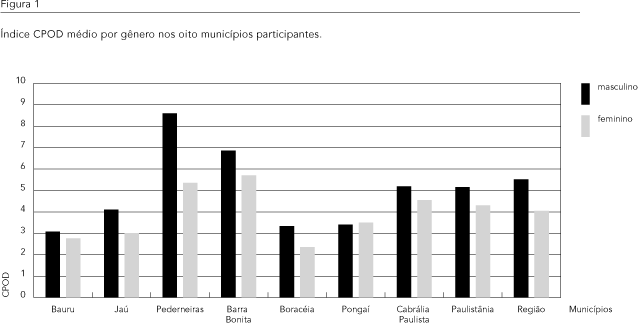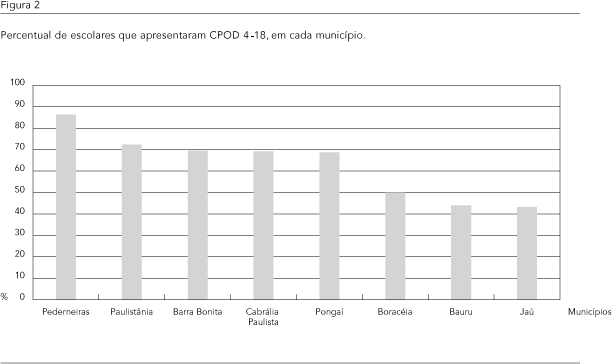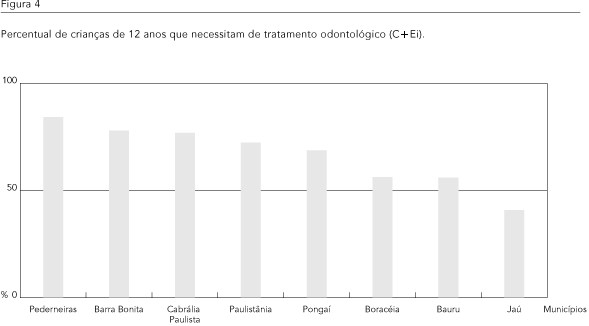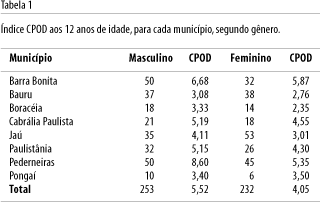This study aimed to analyze the epidemiological profile of dental caries in the central western region of the State of São Paulo, Brazil, focusing on 12-year-old children by gender, comparing the DMFT index in fluoridated and non-fluoridated cities. The study used data from the Epidemiological Surveys in the State of São Paulo, 1998, pertaining to the 10th Regional Health Directorate, including 8 cities. The sample consisted of 485 schoolchildren, both boys and girls, distributed by city. In Pederneiras (a medium-sized city with a fluoridated water supply), DMFT was 7.06, higher than the Brazilian national mean for 1986. Boys showed a higher prevalence of dental caries than girls, showing a new trend for dental caries in the region. There was no statistically significant difference between DMFT in municipalities of the same size, regardless of the presence or absence of fluoride in the water supply, thus suggesting a "convergence" phenomenon, possibly due to the intake of other sources of fluoride and the presence of a "halo" effect. Prevalence of caries in the region was "high", with a DMFT of 4.82, thus failing to reach the goals set for the year 2000.
Dental Caries; DMF Index; Fluorine






